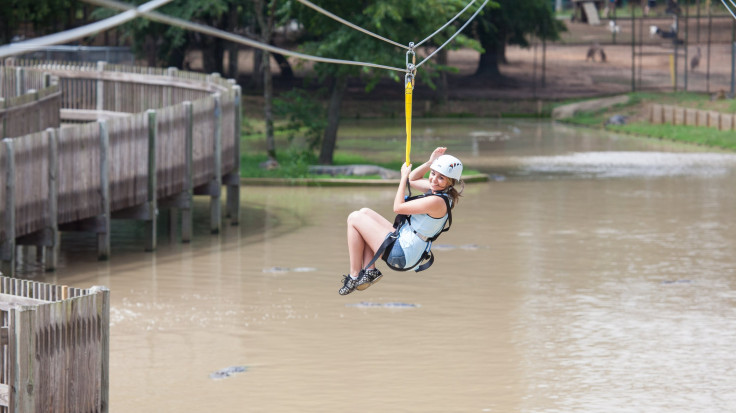As Ziplining Becomes More Popular, So Do The Number Of Injuries: The Trouble With Adventure Sports

Ziplining through the air is no doubt one of the more exhilarating outdoor activities you can take part in, but it’s also becoming one of the most risky. According to a new study published Monday in the American Journal of Emergency Medicine, zipline injuries are becoming more common than ever before, to the point where nearly 10 people suffer from some sort of zipline-related injury every day.
"Though the rate of injuries while ziplining is relatively low, when injuries do occur they can be quite serious," said study author Tracy Mehan, manager of translational research for the Center for Injury Research and Policy at the Research Institute at Nationwide Children's Hospital, in a statement. "The high rate of hospitalization is consistent with what we see for adventure sports and reflects the severity of the injuries associated with this activity."
Mehan and her team arrived at this conclusion after analyzing injuries collected by the National Electronic Injury Surveillance System (NEIS). Of the 16,850 non-fatal, zipline-related injuries treated in U.S. emergency departments from 1997 through 2012, 77 percent were the result of falls and 13 percent were tied to collision. Additionally, 46 percent of the injuries resulted in broken bones, 15 percent in bruises, and 7 percent in concussions or otherwise mild head trauma (of course, even minor head trauma can have lasting consequences). What's more is 11 percent of injuries ultimately led to hospitalization.
As for who’s getting hurt, the authors found that nearly three-fourths of the injuries involved children younger than 19 — 45 percent of injuries specifically involved children younger than 10.
These injuries have been piling up in recent years largely because of the increasing popularity of ziplining, with more than 3,600 ziplines popping up in 2012 alone. However, the number of commercial ziplines (approximately 200 in 2012), which adhere to industry standards, pale in comparison to the more than 13,000 publically available, but unregulated ziplines seen in outdoor education centers, summer camps, and parks.
"Currently, there are a number of national organizations with their own safety guidelines and standards for ziplines, and which of these guidelines and standards are applied to zipline operations varies among states and even among jurisdictions within a state," said senior author Dr. Gary Smith. Smith, also the director of the Center for Injury Research and Policy at Nationwide Children's and professor of pediatrics at The Ohio State University College of Medicine, went on to add, "Commercial ziplines and non-commercial public-accessible ziplines should be subject to uniform safety standards in all states and jurisdictions in the U.S. to help ensure safety."
The growing popularity of homemade ziplines, whose components can be easily bought online, also presents an invisible problem.
"Due to the inherent risks associated with homemade ziplines, parents, caregivers, and children should not install and use ziplines at home," Mehan said. "Improper installation, maintenance, or use of homemade ziplines can result in serious injuries and even death."
To avoid these dangers, the authors caution that adventurers should stick to ziplines belonging to accredited organizations that properly prepare them for their sky-soaring. Additionally, though it should go unsaid, making sure to always wear safety gear is essential.
Source: Mehan T, Smith G, et al. American Journal of Emergency Medicine. 2015.



























